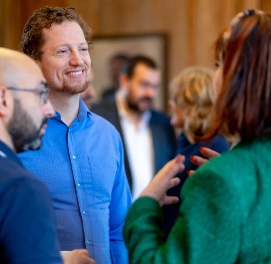In this guest post, Fi Macmillan looks at challenge – the ‘door of possibility’ – in the coaching relationship.
Enough nicely, nicely. It’s time for coaches to challenge more, and challenge hard. So say some within the coaching profession currently.
In the dance between coach and coachee, challenge is a key to the ‘door of possibility’ for the coachee. The right challenge can deepen trust. Yet, as coaches, one of our greatest fears is that it knocks the relationship off-course. An intrinsically authoritative intervention, how do we engage our coachee to create the right challenge for them?
To draw the map, three considerations for the coach in preparing to contract around challenge might be:
- What is the coachee’s current capacity for learning and change?
- What challenge are they currently experiencing in their wider system?
- What is their previous experience of effective challenge and support?
Coachees may struggle with the abstract concept of challenge. To bring it to life, three contracting resources to help the coachee to scale their challenge:
Challenge and support matrix
Yerkes Dodson curve
To explore the limits of challenge
Some argue that an element of surprise and disruption are a necessary part of effective challenge. An experience of this, and ‘fearless speech’ , may be part of creating the contract.
However research suggests that a coach does powerful work when they take their coachee to an edge between awareness and exposure. The coach invites them to choose their own way forward. A hybrid of strong support and ‘spot’ contracting keeps the coach firmly alongside their coachee at this point, asking what is happening for them.
There are three positions from which challenge is offered and this may affect how the coachee experiences support.
- Reporting from an observational ‘high ground’.
- Standing ‘shoulder to shoulder’. Empathetic and parental.
- Standing ‘shoulder to shoulder’ in a spirit of adventure. Equal and ‘thought-partner’.
At this point, the coach may be challenging hard. The world has become more challenging. The work of coaching is to develop new frontiers within the coachee work with this. However, whatever the level of challenge, this is not something to be imposed on the coachee. Rather to honour their choice and stand alongside, their equal, in a spirit of adventure.





